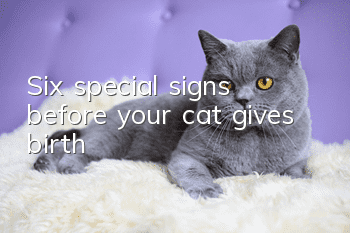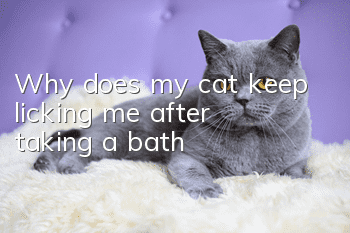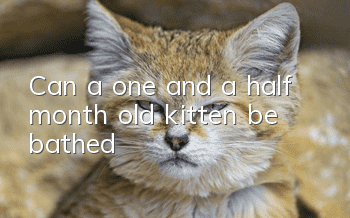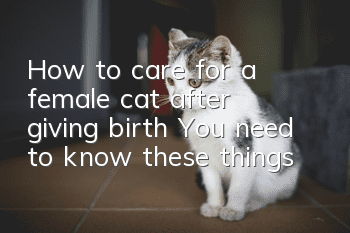Six special signs before your cat gives birth!

After a pet cat successfully mates, it officially enters the pregnancy period. The gestation period of cats is generally about 63 days, but premature birth or delayed birth may also occur. But no matter which case it is, cats have their own special symptoms and phenomena before giving birth. Breeders can accurately judge the time when the cat will give birth based on these signs.
The following are six special signs before a cat is about to give birth:
1. When delivery is approaching, the pet cat’s abdomen is significantly enlarged and begins to sag, and the two rows of nipples that are usually difficult to see become clearly visible;
2. Before giving birth, the nipples of some female cats can squeeze out clear or milky white milk, and some even flow out automatically;
3. When pet cats are about to give birth, they will automatically look for a quiet and comfortable place as a delivery room to use during delivery. If the breeder prepares a delivery room for the cat, the cat will often go in and out of the delivery room and be unwilling to come out;
4. On the day the cat gives birth, the cat will start to stop eating. 12 to 24 hours before delivery, the body temperature of the female cat will drop significantly by about 1 degree, and the body temperature will return to normal during delivery;
5. A few hours before the cat is about to give birth, the female cat’s uterus will begin to contract. The female cat will feel uncomfortable during labor pains, become restless, and lie sideways in the birthing den with rapid breathing. At the same time, the cat will begin to Drink plenty of water;
6. Immediately before the cat officially gives birth, the cat’s vulva will leak out viscous fluid.
These are special signs before a cat gives birth. When a cat shows signs of giving birth, the breeder should start to pay close attention to the cat's behavior and physical condition. Breeders should not disturb the cat's normal life at will, but the breeder needs to quietly observe every move of the cat and strengthen the management and care of the cat from birth. When the cat has dystocia and other conditions, the breeder needs to Provide timely and effective help to help cats give birth smoothly and ensure the safety of cats and kittens.
- How many months can a cat eat cat grass?
- Female cat first litter survival rate
- How to treat cats infected with calicivirus? Diagnosis and treatment of feline calicivirus!
- Do cats with fold ears need to eat chondroitin from an early age?
- Can cats recover from colds on their own?
- Essential knowledge about cat psychology!
- What to do if a big cat has breast enlargement
- What’s the matter with cat’s hair turning yellow?
- Why does the blue cat keep biting its owner?
- How many hours can a kitten transported by air last?



